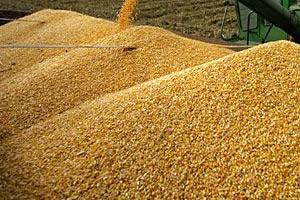Bumper harvest to boost transport industry

Elita Chikwati Senior Agriculture Reporter
The increase in maize production during the 2016-17 season is expected to generate transport business worth over $16 million, the Grain Marketing Board has revealed. Zimbabwe is expecting 2,7 million tonnes of cereals of which around 2,1 million tonnes is expected to come from maize, while over 500 000 tonnes will come from small grains such as pearl millet, finger millet, rapoko and sorghum.
The increase in maize production has been attributed to Government-initiated inputs programmes such as Command Agriculture, Presidential Inputs Scheme, private sector funding and self-funding by farmers.
GMB acting general manager Mr Lawrence Jasi last week said an increase in maize production was going to create opportunities for transporters and urged the operators to register with the parastatal.
He said GMB set up 1 882 maize collection points from which the grain would be transported to its depots, creating opportunities for transporters.
Transporters will also be required to ferry grain from areas of surplus to areas of deficit.
“On average, 720 000 tonnes of grain is expected to be moved from collection points to main GMB depots, creating transport business worth about $7,2 million,” said Mr Jasi.
“A further 300 000 tonnes of grain are expected to be moved from surplus areas to deficit or needy areas such as those close to millers. This also creates transport business worth about $9 million. Thus transport business in excess of $16,2 million is expected to be generated.”
Mr Jasi said GMB had a pool of contracted transporters with a fleet capacity of about 150 000 tonnes at any given time.
“It is important to maintain regular payments to transporters as this is a vital component of the maize value chain,” he said.
Mr Jasi said collection points were meant to reduce the distance travelled by farmers to deliver their grain.
“Collection points will cushion farmers given the poor state of roads damaged by floods,” he said. “There is also need to attend to road repairs to some of the roads to improve access to markets by farmers.”
GMB has a storage capacity of around four million tonnes of grain.
The total long term storage capacity is 749 500 tonnes, of this, 343 300 tonnes is usable in its current state while 315 200 tonnes requires water proofing.
Open storage capacity is 3 365 000 tonnes of bagged grain and all this is available, while shed storage is 173 700 tonnes, making total available storage capacity 3 973 000 tonnes.








Comments